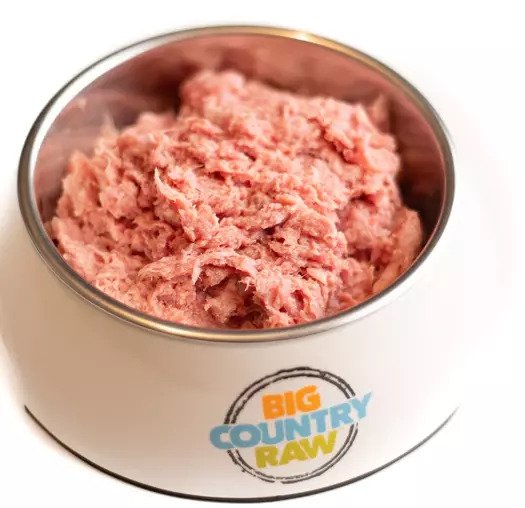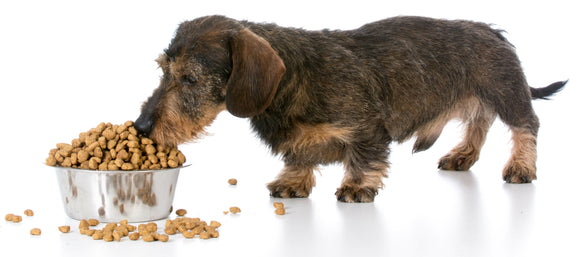
What Is Pancreatitis? How To Choose Dog Food For Pancreatitis?
Table of Contents
Pancreatitis is a disease that can be fatal for dogs, but many dog parents are not aware of it. Pancreatitis occurs when enzymes in the pancreas get mixed with bile and produce harmful toxins that cause inflammation. Dogs will typically experience abdominal pain, vomiting, diarrhea, weight loss, and yellowing of the skin.
This blog post will walk you through all the things that might be happening with your pup's pancreas, what you can do about it, and what you should feed your dog in pancreatitis. If that sounds like something those interests you, then by all means, please stay tuned!

What Is Pancreatitis In Dogs?
Pancreatitis is a condition in which the pancreas becomes inflamed. While most cases of pancreatitis are mild and resolve with no specific treatment, some require medical intervention. Pancreatitis can be acute or chronic, depending on how long it lasts for your dog's case. It usually affects middle-aged to older dogs in either situation. Still, it may occur at any age under certain circumstances such as obesity, trauma from car accidents, falls, kicks, and genetic predisposition.
Pancreatitis is a condition in which the pancreas becomes inflamed, and it can be excruciating for dogs. Pancreatic enzymes destroy any foreign bodies that may have entered its body, including bacteria or cancerous cells, but if they are activated outside of their intended location due to injury to other organs such as the liver or gall bladder, then pancreatitis will occur. The inflammation causes digestive enzymes usually found inside the pancreas instead of being released into your dog's bloodstream, causing widespread damage throughout his entire body.
Causes of pancreatitis
Pancreatitis is a condition that occurs in dogs after they have eaten foods high in fat or protein. For example, the pancreas is responsible for producing digestive enzymes and some hormones and helping regulate blood sugar levels. When a dog eats a lot of fatty meals regularly, this places stress on its body, which may end up causing inflammation in the pancreas itself if not treated properly. Additionally, steatosis refers to abnormal retention of lipid materials within cells - specifically liver cells, but it also occurs with pancreatic beta-cells.
Obesity is a common cause of pancreatitis in dogs. Obesity can lead to many health problems for humans, and it also affects our pets. Dogs are especially at risk because they're much more likely than any other animal species to be obese due to human choices about their food intake and exercise patterns.

Clinical signs
Clinical signs of pancreatitis in dogs include vomiting, dry gums, mucus around the mouth, high fever, which can last hours but sometimes days at worst case scenario, and persistent stomach pains that could feel like cramps. The dog might start having trouble breathing too because its pancreas becomes inflamed, affecting respiratory function; however, some pets show no symptoms until late stages when severe organ damage is present.
Treatment
Many factors can cause pancreatitis, and diagnosing the exact cause is crucial to treating it. For example, pancreatitis that results from gallstones may require surgery, while inflammation due to autoimmune disease might need different treatment options such as steroids or pain medication for relief.
If your vet detects signs of drug-induced pancreatitis during treatment on new drugs, stop using those immediately, so this does not happen again in future therapies. At the first sign of pain from acute symptomatic attacks, seek medical attention right away because most cases will require hospitalization for intravenous hydration with nutritional support.
In addition to these interventions, vets may prescribe corticosteroids, which reduce swelling and irritation within days following administration.
Dogs with pancreatitis should not eat food that contains fat. Dogs who are overfed during an episode of pancreatic inflammation can develop refeeding syndrome, potentially fatal and requiring immediate veterinary care.
Similarly, If a dog is suffering from pancreatitis, it's important not to feed them anything if they are vomiting. Don't provide any food or water because this will worsen the symptoms and make their condition worse. So when your dog is sick with pancreatitis, they will need all of our support during treatment, which includes making sure we don't give them any more stress by feeding them more than necessary.
Treating pancreatitis can be complicated since many medicines are used to treat it, but some might not work for the dog due to their size or breed. Analgesic drugs can help reduce swelling and inflammation on the pancreas, which helps alleviate any discomfort caused by this condition making sure your pet does not suffer from too much pain.
Antibiotics are given in dogs with pancreatitis because it is thought that they can help reduce the inflammation associated with this disease.
Some dogs are hospitalized for pancreatitis, which is a condition that occurs when the digestive enzymes from your dog's pancreas get into its blood. This causes inflammation and swelling of the glandular tissue in this organ, causing it to malfunction.

What to feed your dog in pancreatitis?
When your dog comes down with pancreatitis, you need to make sure they are getting the right foods in their system to start feeling better faster. Dogs who have been diagnosed with this condition typically cannot eat anything for one or two days after diagnosis because of how sensitive the pancreas is when inflammation occurs within its walls.
It would be best if you got your dog a low-fat diet for pancreatitis. A good example would be boiled chicken and rice or ground turkey with no skin mixed in it. Feed this diet for days until your dog starts recovering.
What are the things you should avoid feeding your dog?
Don't feed your dog fatty or greasy foods. Your pet might have pancreatitis, a condition in which the digestive enzymes from their pancreas attack other organs and tissues instead of digesting food. This makes it difficult for dogs to process fats as energy sources, so don't give them anything that is fried or too rich. They can even get sick if you try giving them gravy made with beef fat.
Conclusion
Pancreatitis is a severe and painful disease. It can be devastating for your pup. But don't panic! You have options to provide relief for your dog's pancreatitis symptoms, even if they include diet changes or medication. Feeding a dog with pancreatitis can be tricky because they are typically not hungry, and if they are hungry, the type of food matters. So make sure to feed them a low-fat diet in this situation.



